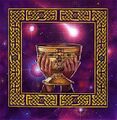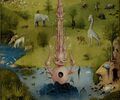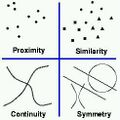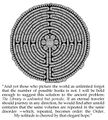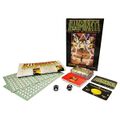User:Annasandri/thesis/2 project proposal: Difference between revisions
Annasandri (talk | contribs) |
Annasandri (talk | contribs) |
||
| Line 166: | Line 166: | ||
https://www.wumingfoundation.com/giap/blank-space-qanon/ [Accessed 12 Nov. 2020].<br> | https://www.wumingfoundation.com/giap/blank-space-qanon/ [Accessed 12 Nov. 2020].<br> | ||
✒Glover, J. (2020). This Is Not a Game Conspiracy theorizing as alternate-reality game. Real Life Magazine, [online]. Available at: https://reallifemag.com/this-is-not-a-game/ [Accessed 12 Nov. 2020]<br> | ✒Glover, J. (2020). This Is Not a Game Conspiracy theorizing as alternate-reality game. Real Life Magazine, [online]. Available at: https://reallifemag.com/this-is-not-a-game/ [Accessed 12 Nov. 2020]<br> | ||
✒Brotherton, R., 2015. Suspicious Minds Why We Believe Conspiracy Theories. 1st ed. Bloomsbury Sigma. | ✒Brotherton, R., 2015. Suspicious Minds Why We Believe Conspiracy Theories. 1st ed. Bloomsbury Sigma.<br> | ||
✒De Marco, M., 2017. A History of Choice Mapping. [Blog] m. c. de marco: To invent new life and new civilizations..., Available at: <https://www.mcdemarco.net/blog/2017/10/27/history-of-choice-mapping/> [Accessed 16 November 2020]. | |||
</div> | </div> | ||
Revision as of 14:52, 17 November 2020
project proposal▒▒▒▒▒
►What do you want to make?
I would like to make a browser game inspired by conspiracy theories, internet rabbit holes and their role in the creation of storytellings and new systems of belief.
I would like to use the game as a tool to explore the borders and the gaps between fiction and non-fiction
by creating a story that uses archetypes and characters borrowed from fictional works and conspiracies that made their way to originate cults and beliefs.
This elements will be reshuffled and repositioned in the game and help the players to question their biases and beliefs by creating links and references to popular culture.
I would like to use the game as a carrier device for a parallel universe that answer to different laws.
Within this context the player is able to immerse themselves in the story and experience how mind mechanisms and biases work in their mind.
I would like to structure the game plot as a fictional research journey where the player will fell as part of an adventure which aim is to solve a mystery and find out a truth.
By playing with an environment familiar to games traditional plotlines the player will find out along the journey that the story is actually offering different conclusions where none of them is either true or false but is only shaped by their perception and values.
Since the game will not require previous knowledge I would like to engage a broad audience of people with a diverse background. The game will aim to be as accessible as possible by creating simple but engaging tasks where no particular experience and skills are needed as well as an understanding of what the game is about.
I would like to put in place a structure that will make the game look like a conspiracy clue inside comments sections, forums and discussions online.
In order to reach the public I will work on creating a varied community that will follow the game since its development and ultimately share it on social medias by responding to conspiracy theory threads with the game's link.
►How do you plan to make it?
My first step will be to make a map and collection of characters and archetypes that exists in the realm of fiction and conspiracy and use them to create a storyline.
⇲
Example: a small visual collection of story's elements.
⇲
Example: Flowcharts from A History of Choice Mapping (De Marco, 2017);
In parallel with this research I will experiment with open source tools for interactive browser games like Twine as well as javascript and python libraries like p5.js, three.js, NLTK.
I will then select and experiment with psychological games linked to recognitions of patterns in images, texts, graphical elements that might enhance of diminish the reliability of a piece of information and text manipulation.
These experiments will take the shape of single game pages that take into exam a concept in particular. They will serve the plot to enhance the interactivity without transforming the game in a demanding challenge for the player.
⇲
Examples: pattern recognition, gestalt experiments;
⇲
Example: a first attempt to manipulate text and sort it into the most frequent letters in the text. A similar page might function as a "fist clue" for the game; More on https://hub.xpub.nl/sandbox/~anna/index2.html
In this phase I will also share the developments of the game to a selected circle of people in order to receive feedback and create a base for them to help me later on to distribute the game.
Once the plotline and the games are completed and tested I will assemble the final game that can then be shared. For this purpose I will work on the circulation of the game both on platforms for independent games and social medias.
De Marco, M., 2017. A History of Choice Mapping. [Blog] m. c. de marco: To invent new life and new civilizations..., Available at: <https://www.mcdemarco.net/blog/2017/10/27/history-of-choice-mapping/> [Accessed 16 November 2020].
►What is your timetable?
November:
Work on the story's plot: define the objective of the game and its mechanics;
Build single game pages from simple ideas;
Do technical tutorials on p5.js, three.js, nltk;
December/January:
Work on the story's plot on Twine;
Build single game pages from simple ideas;
Make people test the small prototypes to have suggestions and feedbacks;
Work on the graphic elements and overall style.
February:
Work on the final version of the game;
March:
Testing final plotline test in March;
Debugging and embed the game with the feedbacks of the test players;
April/May:
Work on the final version of the game;
Work on the promotion of the game on distribution platforms and social medias with the help of the community that followed its development.
►Why do you want to make it?
I would like this project to become a tool to expose and question the human behavioural patterns that generates universes where everything that exists makes sense and happens for the reason an individual believe in. I am convinced that in this historical moment made of wars to fake news, debugging and dependency from scientific data the expedient of a fictional game can make people able to make peace with their inner motifs and find in this awareness a step to stimulate new conversations and responses. As a designer I would like to offer an experience that moves beyond a bipartisan war between "us" and "them" and create a different kind of intervention that departs from what we share as humans.
►Who can help you and how?
I think that Micheal and Manetta can help me in dealing with technical issues.
I would like to contact someone who works with storytellings (writer, novelist, game developer) to receive feedbacks regarding the plot of the story.
Regarding the theoretical and conceptual support I would like to work with researchers and practitioners working with this concepts.
As far I am thinking about:
Florian Cramer
I am interested in his research in conspiracies and the link between fictions and literature;
David Benqué
I am interested in his work regarding choice mapping, diagrams and fairy-tale plots.
►Relation to previous practice
As a graphic designer and illustrator I based most of my practise on creating zines/games on topics that people might consider funny, recreational, or mere anecdotical insights but that can have a relevance in make us understand our world and society. I grew up in a religious environment that shaped the way I perceive, produce and consume stories: for this reason my work often floats around systems of faith and trust. Last year, in the context of Special Issue 13: Radio Implicancies I started to experiment with topics realted to myth-making and the borders between fiction and reality. I recently took part in a collective publication called Pantheon which purpose was to inquiry modern divinities through graphic artworks, comics and illustrations.
►Relation to a larger context
I would like to use the graduation project as an experiment moving in parallel with my thesis research which will focus on the human behaviour of creating connections between different sources and storytellings and adapting them into a system of belief.
Here some books, fictions and games related to my research interest:
Suspicious Minds Why we believe in Conspiracy Theories by Rob Broterton (Brotherton, 2015)
An analysis by the academic psychologist and science writer Rob Broterton about why people believe in conspiracy theories and how our minds are wired. It is linked with my research because of the deconstruction of conspiracies by analysing the patterns of our mind.
The Library of Babel by Jorge Luis Borges (Borges, 1962)
A short novel from 1941 where Borges imagines a universe which consists in an infinite library of hexagonal rooms where the books contain every possible ordering of the 25 basic characters of the alphabet. Though the vast majority of the books in this universe are pure gibberish, the library also must contain, somewhere, every coherent book ever written. The library should contain any information but because of the way it is sorted some librarians are in a state of despair while others fall into superstitious and cult-like behaviours.
It is interesting in relation to my research because of how the story is linked with the problem of dealing with an infinite set of information and its consequences fro the human nature.
Illuminati by Steve Jackson (Jackson, 1982)
A card game inspired by the Illuminatus!Trilogy written by Robert Anton Wilson and Robert Shea (Shea and Wilson, 2016).
In the game every player is competing with each other in order to control the world through various means, including legal, illegal, and even mystical.
It is relevant to my research because of the use of the characters and plots mentioned both in the fictional book and in the universe of conspiracies.
The wisdom and/or madness of crows - An interactive guide to human networks by Nicky Case (Case, 2018)
A game that aims to explain how manipulation works through a series of small games based on psychological researches. It is linked with my project because of the use of small games and experiments.
Brotherton, R., 2015. Suspicious Minds Why We Believe Conspiracy Theories. 1st ed. Bloomsbury Sigma.
Borges, J., 1962. The Library of Babel. In: J. Borges, ed., Labyrinths, 1st ed. New York City: New Directions.
Jackson, S., 1982. Illuminati. [Board game].
Shea, R. and Wilson, R., 2016. The Illuminatus! Trilogy. London: Robinson.
Case, N., 2018. The Wisdom And/Or Madness Of Crowds. [online] Ncase.me. Available at: <https://ncase.me/crowds/> [Accessed 13 November 2020].
►References/bibliography
✒Borges, J., 1962. The Library of Babel. In: J. Borges, ed., Labyrinths, 1st ed. New York City: New Directions.
✒Sauter, M., (2017). The Apophenic Machine. Real Life Magazine, [online]. Available at:https://reallifemag.com/the-apophenic-machine/ [Accessed 12 Nov. 2020].
✒Cramer, F., Wu Ming 1, (2020). Blank Space QAnon. On the Success of a conspiracy fantasy as a collective text interpretation game. Wu Ming Foundation, [online]. Available at:
https://www.wumingfoundation.com/giap/blank-space-qanon/ [Accessed 12 Nov. 2020].
✒Glover, J. (2020). This Is Not a Game Conspiracy theorizing as alternate-reality game. Real Life Magazine, [online]. Available at: https://reallifemag.com/this-is-not-a-game/ [Accessed 12 Nov. 2020]
✒Brotherton, R., 2015. Suspicious Minds Why We Believe Conspiracy Theories. 1st ed. Bloomsbury Sigma.
✒De Marco, M., 2017. A History of Choice Mapping. [Blog] m. c. de marco: To invent new life and new civilizations..., Available at: <https://www.mcdemarco.net/blog/2017/10/27/history-of-choice-mapping/> [Accessed 16 November 2020].






